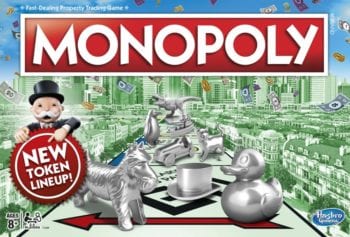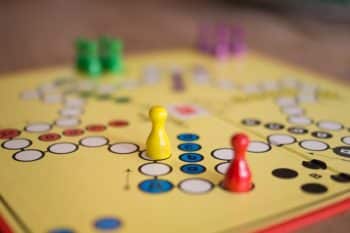The Rise of Board Game Plagiarism
Rook moves two green, you sank my battleship...
 Board and card games are becoming big business. According to one study, board game sales in the United States grew by 28% last year and 24% in the UK. Already an over $9 billion industry, it’s slated to grow another 9% globally by 2022.
Board and card games are becoming big business. According to one study, board game sales in the United States grew by 28% last year and 24% in the UK. Already an over $9 billion industry, it’s slated to grow another 9% globally by 2022.
This explosion in the industry has brought about a slew of new titles, revived interest in old ones and generally made things better for players and creators alike.
However, every time a creative industry booms, there will inevitably be a gold rush toward it. With that gold rush comes both plagiarism and allegations of plagiarism, both of which can greatly hurt the industry. This came to head in back-to-back plagiarism stories that rocked the board game industry this year.
The first happened in April. Game publisher Wonder Dice was accused by a group of French board game designers of plagiarizing its new game, Alien: USCSS Nostromo, from designer Francois Bachelart.
Though there are disputes over how much is similar between the games and no one was accused of illegal behavior, the community backlash was strong. In responding to the allegations, Wonder Dice threatened to sue its critics, prompting an even stronger backlash.
But, shortly after that story died down, an even more significant one appeared. Overturn, a game that was seeking funding on Kickstarter, had blown through all of its funding and was receiving worldwide attention. However, with that attention came scrutiny and soon players discovered plagiarism in the game’s manual, artwork and miniatures.
Though the team behind the game, which is based in Pakistan, tried to blame the problem on their translators, a takedown notice was filed against the game and the company that was managing their pledges pulled out, causing the campaign to be suspended.
Stories such as these are not going away and, as the industry grows, will only become more popular. As such, it’s worthwhile to look at what is plagiarism in board games and, more to the point, what can be protected by intellectual property and what can not.
Board Games: Copyright, Trademark & Patent
 Board games, much like video games, require a massive amount of creativity in a variety of areas to make. However, also much like video games, not all that creativity can be protected by copyright, trademark or other intellectual property.
Board games, much like video games, require a massive amount of creativity in a variety of areas to make. However, also much like video games, not all that creativity can be protected by copyright, trademark or other intellectual property.
Inside a board game’s box is a variety of material that can be (and likely is) protected by copyright. All of the artwork of the game, including the board itself, any cards or miniatures it includes and any drawings in the instruction booklet are all protectable under copyright.
Similarly, any text that’s part of the game is also protected. This includes the text of the rules, the writing on any cards (if there’s enough to meet the threshold for creativity) and so forth.
If the game includes any video or audio components, they too would be protected by copyright. However, those tend to be more an issue for video games than board games.
The title and logo of the game are protected by trademark (though logos can enjoy dual protection under copyright). As such, creating a game with a similar name as so to create confusion is an infringement.
Finally, though many articles say that the process and mechanics of a board game can’t be protected, that is not entirely true. Board games can be and have been patented. If a game’s process is adequately unique, useful and nonobvious, it can receive a patent.
For example, the board game Monopoly received a patent in 1935. However, that patent has long since expired, which is why there are so many Monopoly clones on the market.
However, due to the cost and effort required to obtain a patent, patents are relatively rare in board games, especially for new developers. This is especially true since patents only last 20 years (15 years for design patents), making them the shortest-lived form of intellectual property.
As such, even if a board game’s process can be protected by a patent, many developers either choose not to or are unable to do so. As such, the processes are, very often, not protectable at all.
This has significant impacts on the board game industry, especially as it grows.
Board Game Plagiarism Meets Intellectual Property
 From an ethical standpoint, just about any part of a board game can be plagiarized. Since it takes creativity and effort to develop the process of the game, to draft the rules, create the art and so forth, copying it without attribution is a form of plagiarism.
From an ethical standpoint, just about any part of a board game can be plagiarized. Since it takes creativity and effort to develop the process of the game, to draft the rules, create the art and so forth, copying it without attribution is a form of plagiarism.
After all, plagiarism as an ethical infraction is about taking the work and creativity of others and claiming it for your own.
However, enforcing the rights in your creation is a different matter. While it’s relatively easy to protect elements protected by copyright, such as artwork, text, etc. and even trademark, it’s much more difficult and often impossible to protect the idea behind the game.
We’ve seen this in video games before. There, artwork, code, music and video are easily protected, but the game mechanics are not. That’s led to a near-epidemic of clone games such as Angry Birds clones Angry Farm and Angry Animals.
Due to the physical nature of board games, the cloning problem is not nearly as severe. Higher costs, both in terms of startup and purchase, make it less likely clones will find success.
Instead, this leads to cases similar to Alien: USCSS Nostromo, where the works involved are similar but it’s not a clone by any reasonable standard. This raises a whole separate issue of what is simply good board game design vs. what is unique to one game. This is something that is often only obvious in hindsight as we see how the industry evolves.
In short, what represents an evolution in board gaming vs. what is associated with just one game isn’t always a bright line. That’s something that will be important to remember as plagiarism controversies arise in the field.
Bottom Line
The biggest change in board gaming isn’t just its growth, it’s the rise of small, independent developers (often powered by crowdfunding) that are publishing games while bypassing the large corporations that previously served as gatekeepers.
This has caused and will continue to push forward a rapid evolution in the industry. Though board games have literally thousands of years of history, the foundations of the field are likely shifting as we speak.
This is going to set the stage for some heated conversations about plagiarism and appropriation in that field. The two battles we discussed above are likely just the beginning, especially as more and more new designers attempt to get into the industry.
The community will have a major role in this. Their voice will ultimately decide what is an ethical advancement in the industry and what is a plagiarism. They, with their words and their dollars, will steer how the industry evolves.
Sadly, there’s no easy answer to that challenge. It is just something that will have to be resolved over the next several years, likely one battle at a time.
Want to Reuse or Republish this Content?
If you want to feature this article in your site, classroom or elsewhere, just let us know! We usually grant permission within 24 hours.
